Our remarkable Constitution serves as the cornerstone of the world’s largest democracy. It was crafted by incorporating the finest principles from various world constitutions, a process that Dr Ambedkar aptly referred to as a “bag of borrowings.” The Constitution was envisioned to encapsulate the aspirations for an independent Bharat, as dreamt by our freedom fighters. Now, evaluating its success and impact over the years seems essential.
Many features have contributed to the formation of the Bharatiya Constitution. It establishes a federal system with unitary characteristics. It says in its Preamble that Bharat is a sovereign, socialist, secular, and democratic republic. This Preamble ensures justice, liberty, equality, and fraternity for all citizens. The words ‘socialist’ and ‘secular’ were incorporated in the Preamble of the Constitution by the 42nd Amendment in 1976. The change was enacted during the tenure of the then Prime Minister Indira Gandhi during the period of Emergency (1975-1977). The Constitution envisions a tripartite system, consisting of a Parliament with law-making authority, an independent judiciary, and an executive branch for administration, all designed to maintain a balance among the three. It details six Fundamental Rights, Fundamental Duties, Directive Principles of State Policy, adult suffrage, single citizenship, reservation for the underprivileged, emergency measures, language provisions, independent institutions, and cooperative societies. The articles of the Constitution are both rigid and flexible. In a landmark decision, the Supreme Court struck down Article 368(5), thereby limiting Parliament’s power to amend the Constitution and affirming that certain basic features are not subject to amendment. These include Preamble, free and fair elections, Right to Equality, Judicial review, Rule of Law and Authority of the Supreme Court.
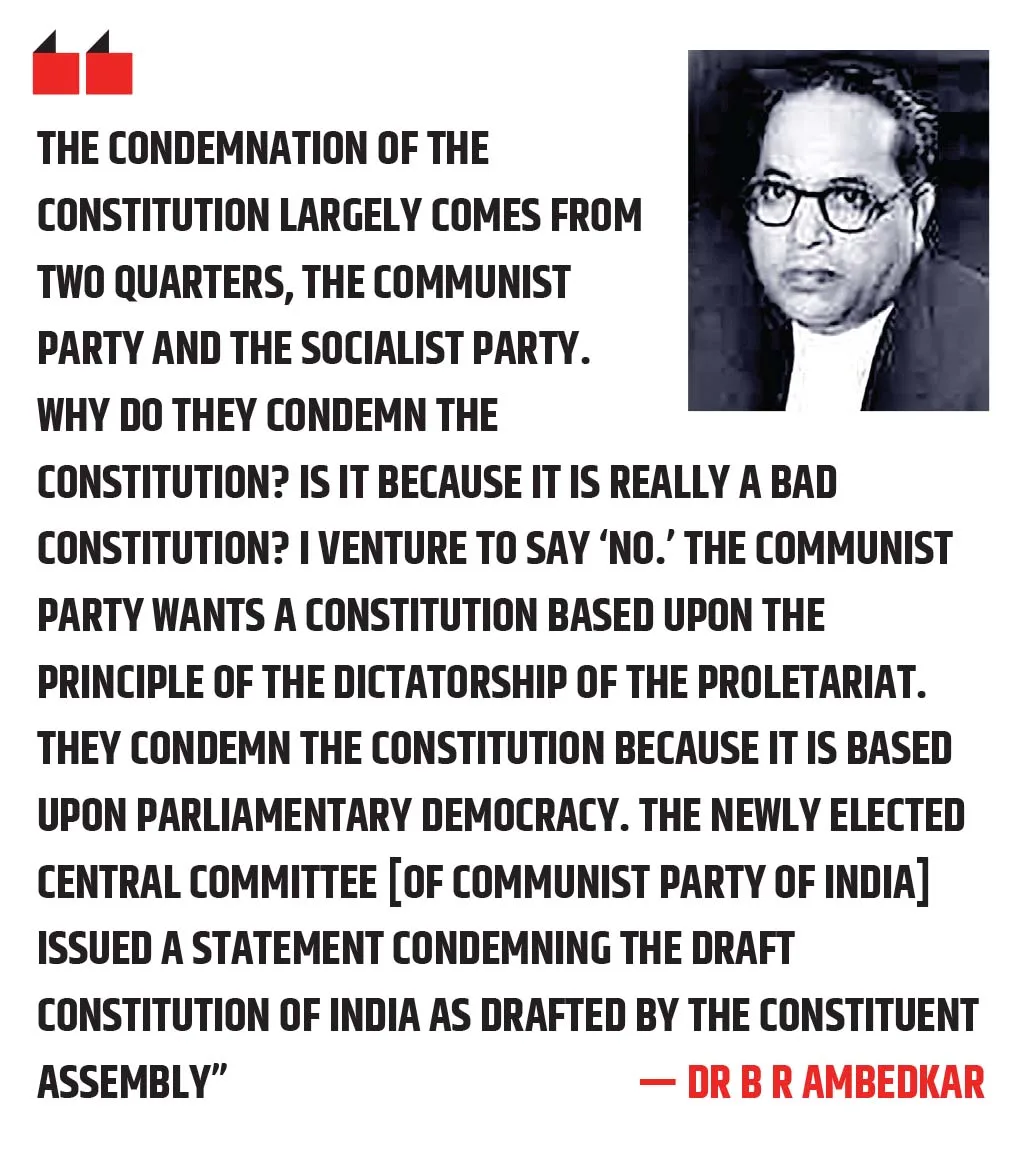
The Constitution also incorporates unitary features, such as a strong Union Government, a single constitution with its rigour, the sovereignty of the Constitution, single citizenship, an integrated judiciary, the appointment of state governors by the Centre, all-India services, emergency provisions and the like.
Bharatiyata in Constitution
The original Indian Constitution is preserved in a special helium-filled case at the Library of the Parliament of India, featuring twenty images that reflect Bharat’s culture and traditions. India is referred to as the mother of democracy, and the Preamble identifies it as a “democratic republic.” The Constituent Assembly adopted “Jana Gana Mana” as the National Anthem and “Vande Mataram” as the National Song on January 24, 1950.
Article 25 guarantees freedom of religion, allowing access to Hindu religious institutions for all classes and sections of Hindus. The Constitution abolishes untouchability and prohibits discrimination based on religion, race, caste, sex, or place of birth. Sikhs, Jains, and Buddhists are included under the term ‘Hindus.’ Article 27 prohibits tax payments for the promotion of any specific religion, while Article 31A allows the State to take over the management of any property but only “for a limited period”. Article 21 addresses the protection of life and personal liberty, with the Supreme Court interpreting it to encompass the “right to livelihood.”
The Directive Principles of State Policy in Part IV represent the Constitution’s most commendable aspects. These principles advocate for organising village panchayats, establishing a Uniform Civil Code, prohibiting cow slaughter, protecting and improving the environment, safeguarding forests and wildlife, preserving ancient places and objects of national importance, and promoting international peace and security reflecting the ancient principle of Vasudhaiva Kutumbakam—the idea that the whole Earth is one family.
Part V outlines Fundamental Duties, encouraging citizens to cherish and uphold the noble ideals that inspired the national freedom struggle, promote harmony and brotherhood, preserve the rich cultural heritage, protect the environment, show compassion for living beings, develop scientific temper, humanism, and the spirit of inquiry and reform, and strive for excellence in all spheres so that the nation constantly rises to higher levels.
The 73rd and 74th amendments in 1992 established a three-tier administrative system adding Panchayati Raj and local administrative bodies. Part IX and the eleventh schedule pertain to Panchayats, introduced by the 73rd Amendment.
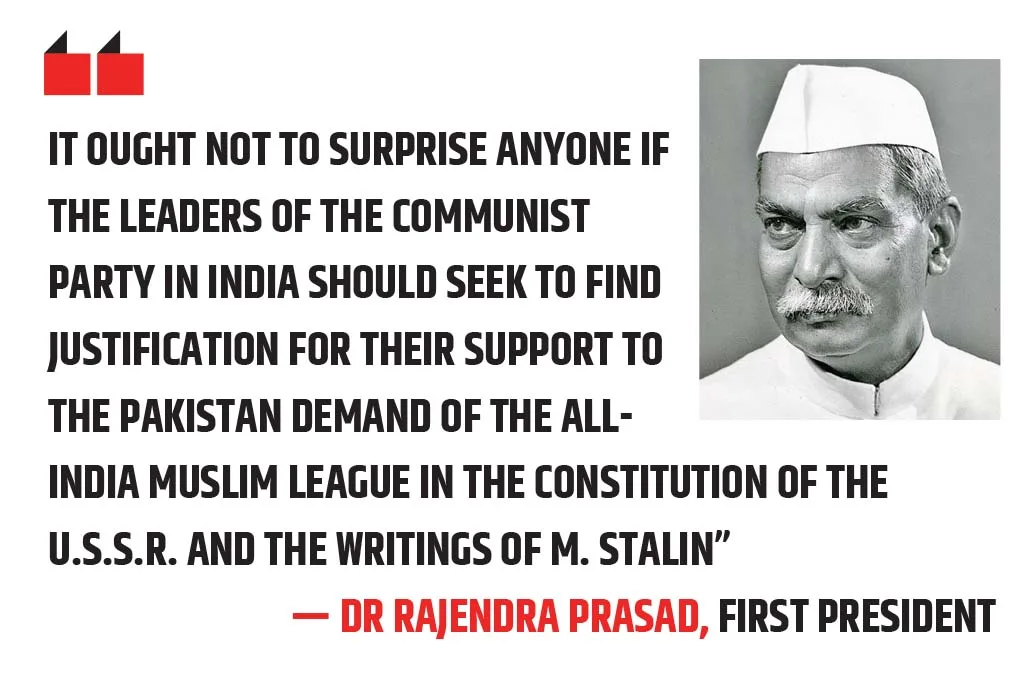
Article 343 designates Hindi as the official language, with English continuing for 50 years. Article 351 states that Hindi shall primarily draw “wherever necessary or desirable, for its vocabulary, primarily on Sanskrit and secondarily on other languages.” Article 343 mandates the use of Devanagari numerals. The Eighth Schedule recognises 22 languages, including Urdu. The 7th Amendment, which reorganised States based on linguistic lines, has been criticised for fostering regional divisions.
These elements collectively embody the spirit of Bharatiya culture.
The Trajectory of Amendments
The trajectory of constitutional amendments has seen conscious efforts to mutilate the Indian Constitution during Congress regimes. The Constitution has been amended about 80 times by Congress Governments, with Indira Gandhi alone amending it 25 times between 1966 and 1977. The First Amendment, initiated by Jawaharlal Nehru just 15 months after the Constitution’s adoption was aimed at limiting the Fundamental Right to Freedom of Speech in response to vehement criticism from Organiser Weekly regarding Nehru’s policies. In contrast, the historic first Amendment to the US Constitution expanded Freedom of Speech. The 1st Amendment to the Indian Constitution also included provisions for the abolition of the Zamindari system.
The fundamental ‘Right to Property’ was restricted by the 4th Amendment and later removed by the 44th Amendment. Currently, the ‘Right to Property’ is no longer a Fundamental Right but remains a constitutional right under Article 300A, which states that no person shall be deprived of property except by authority of law.
For every Bharatiya, Constitution remains the sacred book, that guides us to move further together. And has protected everyone’s rights irrespective of their different identity
In response to the experiences of Communists siding with China during the 1962 war, the 16th Amendment in 1963 mandated that seekers of public office swear allegiance to the Indian Republic.
The infamous 42nd Amendment, enacted by the Congress Government, will be known in the annals of history as the butchering of democracy and individual freedom. It severely undermined the Constitution’s integrity by curtailing judicial review by higher courts, expanding the discretionary powers of the Prime Minister and Speaker of the Lok Sabha, granting Parliament excessive authority to amend the Constitution arbitrarily, allowing for the automatic suspension of Fundamental Rights, and stipulating that constitutional amendments could not be challenged in courts, among other changes. The subsequent Janata Party Government reversed many of these provisions.
The 51st Amendment of 1985 introduced anti-defection measures, while the 91st Amendment strengthened these laws and capped the size of State Councils of Ministers at 15 per cent to prevent unrestrained expansion for political gain. The 61st Amendment of 1989 lowered the voting age from 21 to 18, reflecting the evolving aspirations of the younger generation. The 86th Amendment established the right to education up to the age of fourteen. The 96th Amendment of 2011 was aimed at promoting cooperative societies but was partially struck down by the Supreme Court in 2021 for lack of ratification by State Governments. The NDA Government has enacted eight amendments with support from some opposition parties, including the transformative GST system introduced by the 101st Amendment of 2016.
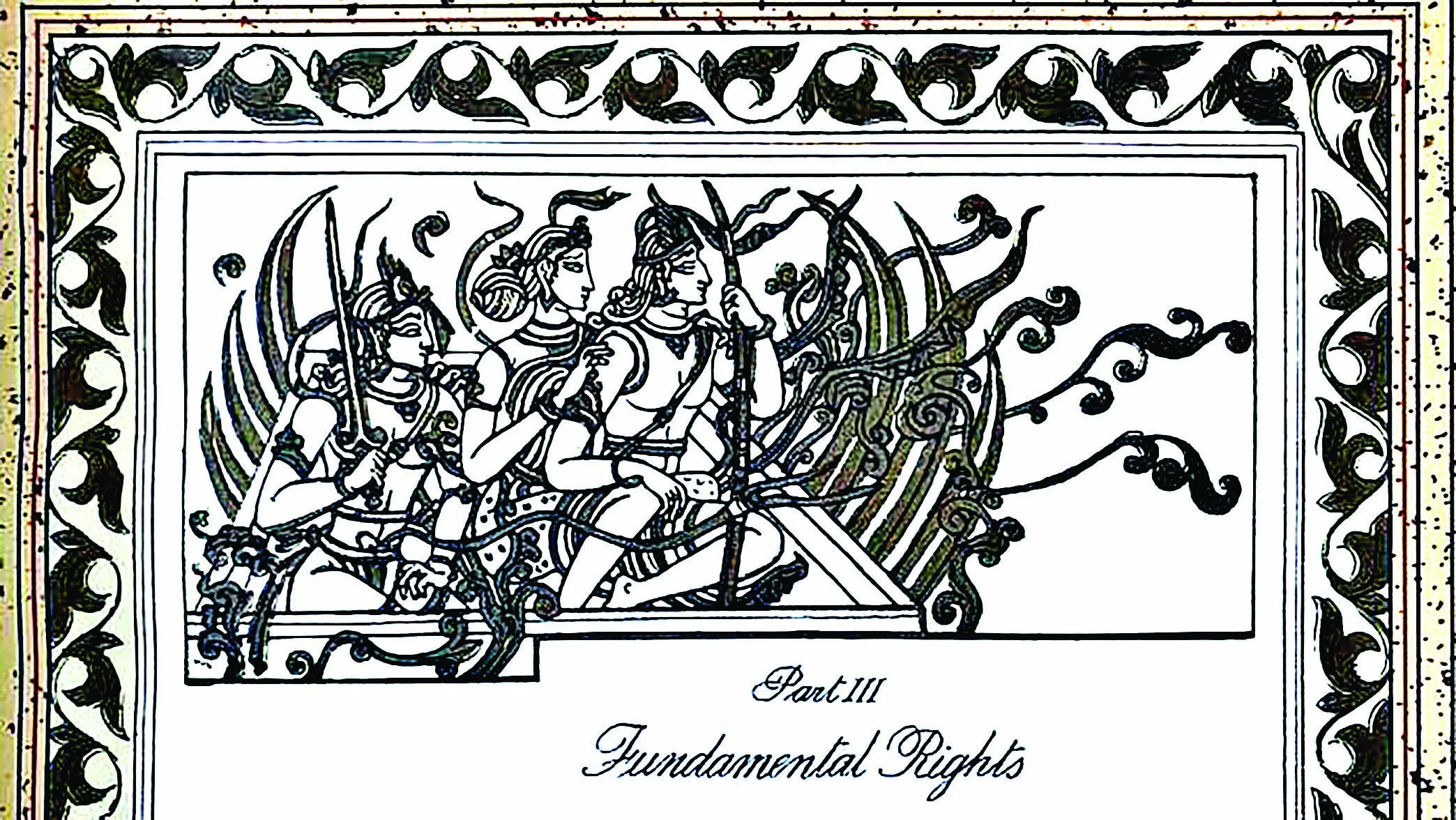
Reservations for SC/ST communities have been periodically extended, addressing the ongoing challenge that even today, a sizeable section of the society continues to remain backward. The 89th Amendment of 2003 established separate SC and ST Commissions, while the 93rd Amendment in 2006 introduced OBC reservations in Government jobs and private educational institutions. The 102nd Amendment in 2018 granted constitutional status to the National Commission for Backward Classes and provided a maximum of 10 per cent reservation for ‘Economically Weaker Sections’ (EWS) in addition to socially and educationally backward sections. The 104th Amendment in 2020 eliminated reservations for the Anglo-Indian community in Lok Sabha and State Assemblies. In 2021, the Supreme Court annulled the 105th Amendment, which sought to restore State Governments’ power to identify OBCs, ruling that only the Central Government held that authority. In 2023, the Modi Government enacted the historic 106th Amendment, reserving one-third of seats in Lok Sabha and State Assemblies for women.
Discord Between Parliament and Judiciary
The relationship between Parliament and the Judiciary had a history of stormy days, marked by conflicts over constitutional amendments. The Congress Government faced repeated defeats in court for its attempts to mutilate the Constitution. For instance, the First Amendment by Nehru and the 25th, 39th, and 42nd Amendments by Indira Gandhi faced judicial scrutiny.
Article 13(4), inserted by the 24th Amendment in 1971, enabled Parliament to dilute Fundamental Rights. The judiciary has also annulled amendments aimed at preventing its interference with Parliament’s legislative powers. In the Shanari Prasad case of 1951 and the Sajjan Singh case of 1965, the Supreme Court maintained that Parliament possessed unlimited power to amend the Constitution. However, this perspective shifted with the 1967 Golaknath case with a narrow majority, which addressed Fundamental Rights. When the Parliament encroached upon the powers of the judiciary against the verdict, the landmark judgement in Kesavananda Bharati case was pronounced in 1973, again with a narrow majority. The verdict established that certain “essential features” and the “basic structure” of the Constitution cannot be altered by amendments. The Minerva Mills case in 1980 further clarified aspects of the Constitution’s basic structure that cannot be disturbed. The Supreme Court invalidated certain clauses of the 25th Amendment in the Kesavananda Bharati case and some provisions of the 42nd Amendment in the Minerva Mills case.
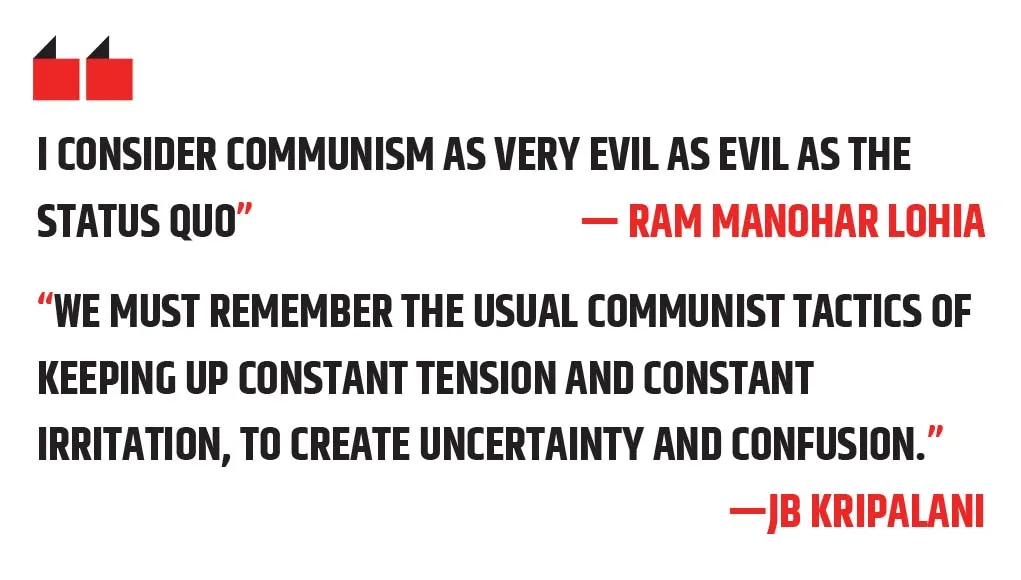
In 1975, the Allahabad High Court struck down the 39th Amendment, which shielded the election issues of the Prime Minister and Speaker of the Lok Sabha from judicial scrutiny. The Supreme Court modified this ruling later that year, invalidating specific clauses of the 39th Amendment. In the Sambamurthy case, the Supreme Court declared Article 371D (3) & (5) unconstitutional on different grounds. Additionally, a paragraph of the 10th schedule was struck down by the Supreme Court in the Kihoto Hollohan case in 1992. The judiciary has closely monitored legislative actions and developed its own theories to address emerging issues. Higher courts have often engaged in what is termed “judicial legislation” to fill gaps in the Constitution. For instance, while interpreting the concept of “equality before law” in Article 14, the Supreme Court added phrases like “in similar circumstances” and “intelligible differentia” into the Article. Similarly, the judiciary has recognised several “Fundamental Rights,” including the “right to information” under Article 19 and the “right to life” and “right to environment” under Article 21. Controversy arose in 2015 when the Judiciary annulled the 99th Amendment, which aimed to establish a National Judicial Appointments Commission to replace the Collegium system.
Future Trajectories
The Indian Constitution is one of the longest in the world, containing numerous redundant and temporary provisions, procedures as well as unscientific articles that warrant removal. For instance, a provision exists for establishing a university in Andhra Pradesh. Many have pointed out shortcomings such as this.

Significant time in the Constituent Assembly was devoted to debating whether to adopt a British-model Prime Ministerial system or an American-model Presidential system, ultimately settling on the British model. However, a major oversight was the failure to incorporate a decentralised Panchayat system into the Constitution, aside from a brief mention in the directive principles, until the 1992 amendment. The Panchayat system has proven to be a resilient decentralised political structure that has enabled Bharat to navigate historical political challenges for millennia. Our democracy has also demonstrated that a party with just five MPs in the 543-member Lok Sabha can elevate one of its MPs to the position of Prime Minister, highlighting the need for reform in the parliamentary system.
Many question whether our cultural characteristics, aspirations, and rich heritage are adequately represented in the Constitution. The legal terminology in Articles 32 and 226, such as habeas corpus, mandamus, quo warranto, and certiorari, may be challenging for the average citizen to comprehend. For the law to be effectively implemented, it must resonate with the cultural characteristics of the populace. Notably, the term Dharma is absent from the Constitution, despite the people believing in its significance in binding people together (Dharmo dharayati prajah).
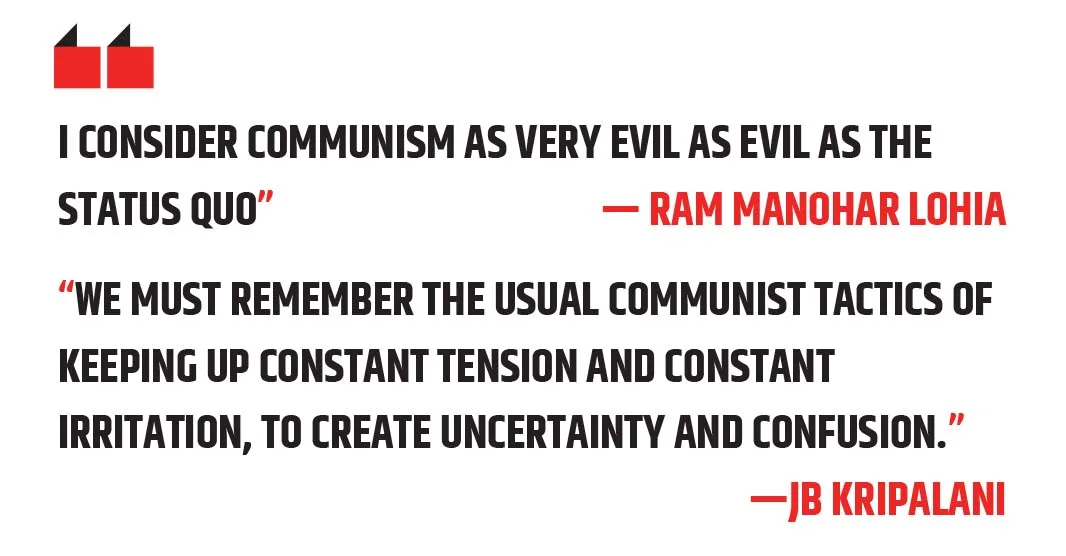
While the Directive Principles of State Policy encapsulates significant ideas from our national tradition, they lack enforceability through the courts, hindering the pace of social change achieved through judicial pronouncements. The fate of the Uniform Civil Code exemplifies this challenge. During the Emergency, Indira Gandhi butchered democracy while utilising the same Constitution that champions democratic values.
Thirteen years after the term “socialism” was added to the Preamble in 1976, socialism was wiped off from the face of the Earth with the fall of the Soviet Union. The inclusion of “secularism” has sparked debate, as it is not defined within the context of Bharat’s cultural tradition. The European concept of “secularism” is anti-religious which emerged in response to the Church’s interference with monarchy, whereas the Indian perspective emphasises Sarva panth samadar, or equal respect for all religions, including atheism. Having said that, for every Bharatiya, Constitution remains the sacred book, that guides us to move further together. And has protected everyone’s rights irrespective of their different identity. Undoubtedly, Constitution binds us all together.


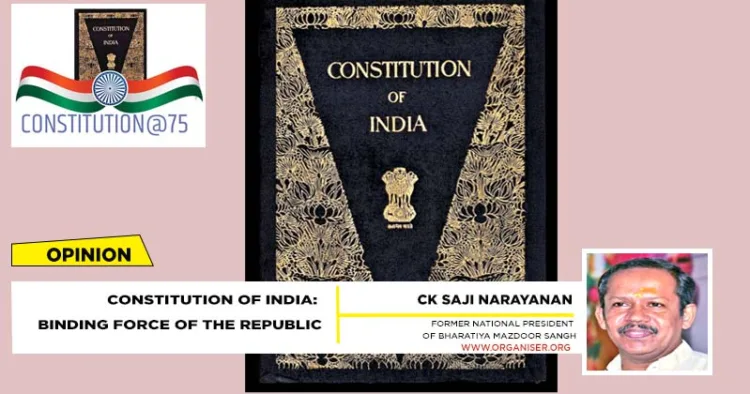
















Comments